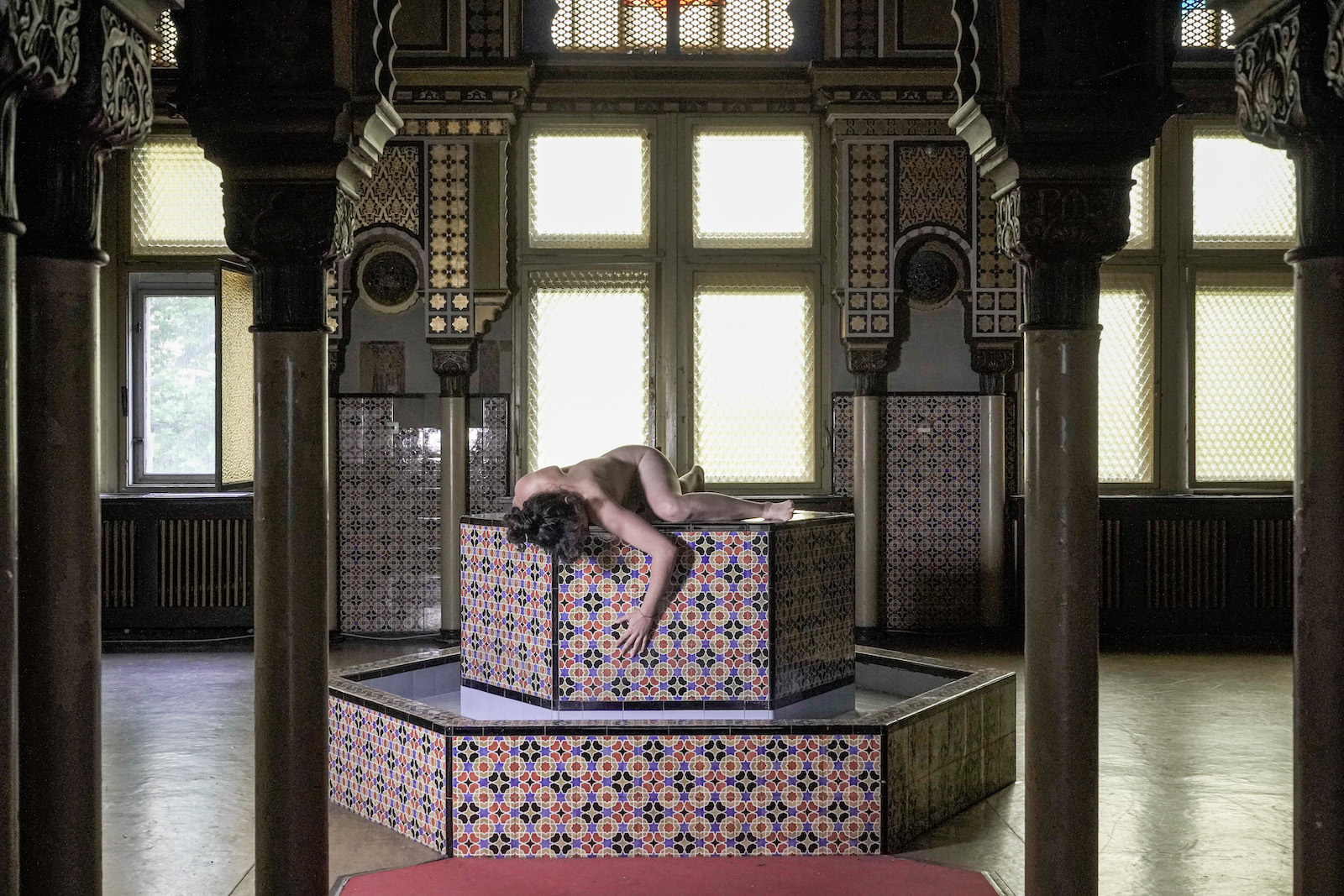
Inspired by the early 13th-century work De balneis Puteolanis, Carsten Saeger explores the vacated architecture of the Altes Stadtbad (Old Public Baths) in Leipzig in a situational installation. Together with artist Selin Wutzler, he scrutinises cultural representation and its connection to yearning, escapism and healing.
Composed by the poet Petrus de Ebulo (1170–1220) and dedicated to none less than Emperor Frederick II (1194–1250), De balneis Puteolanis – as “a first instance of a scientific treatise that is also a work of poetry” – describes the hydrotherapeutic benefits of the ancient thermal springs in Pozzuoli and Baia, near Naples. Frederick II was an admirer of antique architecture and equally of Arab culture, and the manuscript was intended to attest the latter’s influence upon contemporary science and medicine. In the illustrations accompanying the text in the complete manuscript of De balneis Puteolanis preserved in Rome*, this connection becomes particularly clear: domes, columns and arches of “Byzantine origin” form the background to Biblical scenes, rendered in part in an “oriental manner” and set within an abstract landscape of volcanoes, rocks, caves and water. Particularly striking within these miniatures are the recurring groups of naked bathers, making gestures with their hands. They touch the parts of their body that are ailing them, and thus indicate the curative effect of the baths in question. The figures crowded tightly together recall scenes set in Purgatory and so forge a link between medical healing and religious salvation – even if hot springs at that time were also considered an entrance to Hell. Last but not least, the didactic poem De balneis Puteolanis was intended to encourage the preservation or restoration of the Ancient Roman baths, or at least as an opportunity to document and thus conserve their inscriptions.
In the installation at the Altes Stadtbad, excerpts from the poem could be heard in German and Turkish. In conjunction with the video Acheloos’ Dream and the performance, different historical levels overlapped and created new images that called the identity of the location into question.
(Translation by Karen Williams)
*MS 1474, Biblioteca Angelica de Rome. Quotations in the present text are based on the introduction by Silvia Maddalo to the facsimile edition: Petrus de Ebulo, Nomina et Virtutes Balneorum, seu, De Balneis Puteolorum et Baiarum, vol. 1 (facsimile), vol. 2 (commentary), Rome, Istituto poligrafico e Zecca dello Stato, Libreria dello Stato [1998]
(This project was supported by Kulturamt Leipzig.)
Credits:
Performers: Rasheed Alashkar, Mirsini Artakianou, Winnie Weigel, Selin Wutzler
Photo 1 by Ramona Schacht
Trailer & Photo 2 by Carsten Saeger
Brochure design by Carla Selva & Paul Zech
